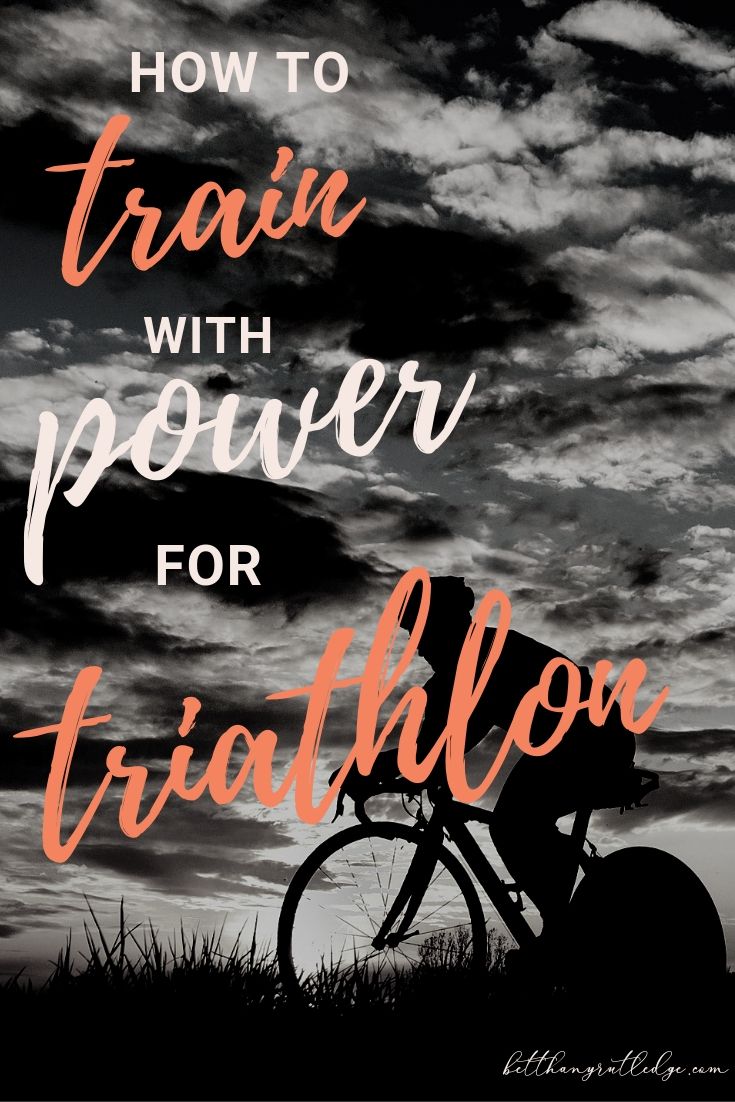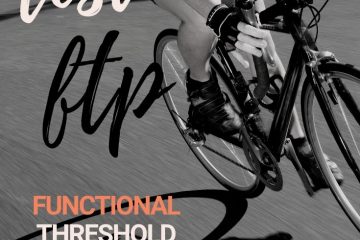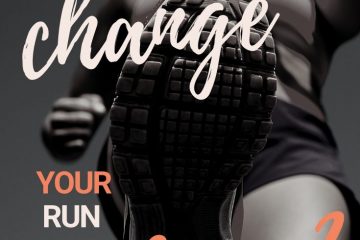A Triathlete’s Guide to Training with Power

We have more training with power device options than ever before. But with all the training with power options comes a plethora of training with power information.
First the practice of using heart rate for training became accessible to the masses, especially after the introduction of low cost wrist heart rate.
Then the price of power meters for cycling plummeted as competition in the marketplace increased. With so much data at our fingertips it’s easy to fall into the trap of understanding what’s it all for and how it should be used.
This guide will cover common power terms, best practices in using power, and pacing your race with power.
Training with Power Terms
If you’re new to training with power, here are some terms you’ll need to know.
Note: Make sure your zones are set correctly in both your training software and your head unit for these values to be accurate.
If you haven’t tested your functional threshold power yet, but sure to do that first. Here’s How: What your functional threshold power is and how to test it.
What is Power in Cycling?
Power (watts) is simply torque (force put on the pedal) times rotational speed (cadence) Low cadence= high force= more fast twitch muscle recruitment while a higher cadence= lower force- more slow twitch fiber recruitment.
Functional Threshold Power versus Lactate Threshold
FTP relates closely to Lactate Threshold. Lactate Threshold is the point where lactate begins to accumulate in the blood, that is, when your body is producing more lactate than it can consume.
Lactate threshold is what’s happening inside the body and can only be truly measured with a blood lactate test (think someone pricking your finger while you perform an indoor time trial).
FTP on the other hand, can be measured in a field test and only requires a power meter, bike, and motivated athlete.
Think of V02 max as your upper limit of aerobic energy production and FTP as the percentage of that limit that you can sustain. Both are important when predicting endurance performance.
Other factors include VO2 Max (maximal oxygen consumption) and efficiency. Of these three variables, FTP is the variable that is both easily measured and trainable.
Even if you don’t train with power you’ve likely felt the moment where you’ve crossed the threshold zone. To keep things simple, when you ride above your FTP you will tire quickly, and if you’re riding below FTP you’ll be able to sustain your output for much longer.
Read: What your functional threshold power is and how to test it.
Average Power
This is a simple one—it’s a measure of your actual power over the course of the session, including zeros. Because average power does not describe the work performed during a session, it is not usually a good indicator of how fatiguing a session was.
Normalized Power
This is the predicted effort you could have held if you had maintained an even effort versus a variable effort. I.E. if you were charging up the hills and coasting on the other side, there would be a greater disparity between normalized and average power values.
Why use normalized power?
This number seeks to better quantify the relative effort of a session, thus normalized instead of average power is generally used for triathlon race pacing.
Intensity Factor (IF)
While average and normalized power are objective measures, intensity factor is subjective as it’s expressed as a percentage of threshold power maintained over a period of time.
Due to its definition, your IF for an hour effort cannot be more than one. So if your values consistently show this, it’s a red flag that some of your values somewhere are set wrong.
Variability Index (VI)
VI is simply your normalized power divided by average power. There is lot of talk about ideal variability index, but the truth is it will vary.
Your goal race type, terrain and pacing plan determine optimal VI. Generally, for triathlon, a VI of less than 1.05 is desirable on rolling terrain. On a perfectly flat course, your ideal VI will be close to one.
Keep in mind this only applies to non-drafting triathlon, where the best performances are usually achieved by an even application of effort.
Watts/KG or power to weight ratio
Watts per kilogram of body weight is the way to compare the power values of riders of different sizes. Performance gains can come from working on either the body weight side or the power increase side of the equation. According to Dr. Andrew Coggan’s power profile, a watts/kg ratio at threshold of 4–4.5 equates to a Cat 2 cyclist.
Comparing Cycling Power Output
In the old days, when everyone rode outside, it seemed easy to judge who was the best cyclist. Through a combination of factors, they simply went faster.
Now, with the amount of training with power data at our fingertips, and the popularity of riding indoors, things seem a little fuzzy.
Is that 100 lb girl in your flywheel class “beating” the 300 lb rider next to her, even though her power is relatively miniscule? Well…maybe.
Let’s look at the variables more closely:
Variables in Comparing Cycling Power Data
Power Measuring Device
Cyclists and triathletes who want to do “size comparisons” with friends should be critical of data source.
For example, many popular spin studios and bikes use an “estimation” of power that can be way off from true values.
While most of this is accidental, I also suspect there is a marketing angle akin to the practice of vanity sizing. Who doesn’t want to wear the same size they did in high school and what cyclist doesn’t want to be told they’re a rock star?
Flywheel is measuring torque and not actual power. Peloton does this.
Power, Weight, and CDA
You may have heard long-time cyclists discuss their efforts to make their bike lighter and more aero, geeking out over saved grams of weight in expensive bike parts or the latest aero helmet or water bottle. But how do the three factors of weight, power output, and aerodynamics work together to dictate cycling performance? Which is the most important or which factor do you need to personally work on?
Bodyweight
Weight does matter, but it’s the weight of the body and not the bike where most of us could stand to make the most gains and improve performance. Check out this chart of past champions and you’ll see that the range for these elite cyclists is actually pretty narrow.
Also, cycling performance isn’t just about maximizing the power you can put out, but maximizing your power to weight ratio. Power to weight is something we talk a lot about at Energy Lab, for the higher watts per kg you can achieve the faster you will ultimately go. More on this later in our example.
Aerodynamics
You’ve probably noticed by watching the tour that even amongst skinny cyclists, body type varies significantly. And the guys winning sprints are not usually contenders for the king of the mountain
For a triathlete riding flat courses or a time trial what matters more is watts/CDA instead of straight watts per kg. CDA is the drag coefficient (Cd= dimensionless) times size (frontal area= M2) Without getting too in depth, basically you need to consider your aerodynamic profile as an essential part of your speed.
Picking your course
There are several important factors that go into race results and reasons why we actually need to have a race versus just tabulate our relevant stats and name a winner. And depending on what your strength is, you can definitely pick a course that suits you.
Like we alluded to, heavier cyclists will be less penalized on a flat course, especially if they have a good position. Larger, heavier cyclists will also have an advantage in an indoor time trial, since Dragfactor on a computrainer is an approximation of your drag but treats all riders equally regardless of weight (unless you adjust it manually)
Lightweights with a good power to weight ratio will be at an advantage on a hillier course, while a cyclist of any size and weight with a great position (and an ability to hold it) will be able to maximize their performance on any type of course.
Comparing the effect of weight and power
So which angle should you focus on for optimal performance-weight, power, or aerodynamic position?Ideally, you will be able to work from all angles for optimal performance. Let’s say your goal is to get your Functional Threshold Power from 3.0 to 3.5 watts per kg, a competitive amateur goal for local racing Cat 4 cyclist for men and a competitive cat 3 for women
Here is a simple example which illustrates the effect of weight loss.
Starting Point
Man: 175 lb = ~80 kg x 3.0 watts per kg = 240 watts at Threshold
Woman: 135= ~61 kg x 3.0 watts per kg = 183 watts at Threshold
Power Gains Needed to reach 3.5 watts per kg
Man: 175 lb= ~80 kg x 3.5 = 280 watts at Threshold
Woman 135- ~61 x 3.5= 215 watts at Threshold
In our example above, you can see that the male rider will have to increase his FTP by 40 watts to reach 3.5 watts per kg while the female rider must increase hers by a whopping 32 watts. Unless you’ve only been cycling for a short time, or are coming back from a long hiatus, those are some tough gains.
Now let’s take a look at the impact of training gains versus a 10 lb weight loss for each rider, assuming they can successfully keep the same power output.
Starting Point
Man: 175 lb = ~80 kg x 3.0 watts per kg = 240 watts at Threshold
Woman: 135= ~61 kg x 3.0 watts per kg = 183 watts at Threshold
Power Output Gains to reach 3.5 watts per kg
Man: 175 lb= ~80 kg x 3.5 = 280 watts at Threshold
Woman 135- ~61 x 3.5= 215 watts at Threshold
Method Two: 10 lb weight loss
Man: 165 lb= 75 kg x 3.5 = 262 watts at Threshold
Woman: 125 lb= 56.8 kg x 3.5 = 198.8 watts at Threshold
By losing only ten pounds, that decreases the gains needed by our male rider to 22 watts and our female rider to only 16 watts, less than half the increase needed if they both were ten pounds heavier.
Depending on your starting weight and what you can comfortably lose while keeping your power, a combo approach is the best bet.
Notice that we did not try to calculate the effect of improved aerodynamics on the performance of our two riders.
If you feel like your position may be lacking, we recommend seeking the counsel of our next door neighbors at Podium for an expert bike fitting.
Which cycling data matters most?
By this point you may be wondering which metrics you should actually track.
In cycling the gold standard of measurement is power which is objective. Secondary, or ideally in conjunction with this metric is heart rate. Input and output will show you the work and how you’re responding.
Speed is a terrible metric to use. There is little reason for a triathlete to look at speed unless they have some sort of bet riding on the line.
Use power and heart rate during training. During your race, go primarily by heart rate and have a power range your will seek to adhere to instead of arbitrary magical number.
There are also a few practical details to adhere to in order to make sure you can trust your data:
Best practices for capturing accurate power data:
Always zero your power meter.
Note: zero-ing is often referred to as “calibrating” which is actually a misnomer.
Whatever you call it, failing to zero with make your training with power data invalid and invariably lead to the aforementioned “I once did something I didn’t really do” scenario.
Always include zero averaging
Select include zeros in your measuring device. Sure, it looks cooler to have a higher number without zeros but the fact is you did coast so it’s telling you a white lie.
Keep your power curve clean
“Keep your power curve clean” by only including power data from one recording device. Many devices are precise to themselves but their accuracy from one to another varies. It does you no good to hit 200 watts on a 20 minute benchmark effort, then hit 220 watts on your indoor trainer. Not only are you not necessarily not better, you won’t even know if you’re better which can be worse.
Test using the same power meter
Duh right? That said, if you’re training at a cycling studio like Energy Lab, chances are you’re going to be riding a different trainer each time.
Keep FTP testing conditions the same
Temperature of the room. PSI if measuring power from the wheel. Those small details affect your readings.
Related: What you need to know about cadence and cycling
Pacing a triathlon with power
There are some problems with pacing a long-course race with just power. Namely, it tells you what work you’re doing but not how your body is responding to the work.
The Emotional Side of Power
My thoughts on this subject could also be summed up as the emotional consequences of (singularly) pacing with power. By the way, this advice applies to pacing with power in long races such as 70.3 and 140.6.
Let me illustrate with a story. It was the summer of 2013 in Louisville, KY and I was midway through the IRONMAN Louisville bike leg. As it turns out, I was having one of the best races of my life despite having to sit up a ton on the bike.
I was obsessed with staring at my NP for the ride and willing that number not to go down. I had it in my mind that I wanted to average 170 for the bike leg, yet my power hovered stubbornly around 165.
I stared at that number for nearly six hours, obsessing, berating, and lamenting the fact that my chance was lost, so I thought.
This wasn’t the first time I had let power interfere with my mental state either. And although to someone outside of the sport may think this scenario sounds crazy, it happens on some level to more athletes I have coached than not whether it’s not hitting a coveted number in training or in the actual race.

Heart Rate Still Trumps Power
This illustrates one of the many reasons that I know use and recommend heart rate as a primary driver in races. Your heart rate will never lie to you. It will tell you how you’re responding to the work, what you actually can do.
Pacing by NP or AP alone is a recipe for self – flagellation and disappointment. What if the course has a lot of downhills? What if it’s 90 degrees. What if, for whatever reason, you spend extra time coasting and it causes your AP to be less than planned?
The reactions to these situations sound dramatic but are remarkably common. The same thing happens in daily training when athletes become overly obsessed with their pool times, their easy run pace, or any other metric that will naturally vary.
Not only will the situation dictate variations on what you can do performance wise on any given day, so will your body. Whether you’re fighting off an illness, are under load, or forgot to drink fluids on the day the result is the same.
There’s also device fallibility to consider. Power meters are not perfect. I once got a unit that read about 60 watts low on any given effort and I had to give it back.
My psyche simply couldn’t handle that shift, even though the unit read true to itself. And there are plenty of days you won’t even know why you can’t hit your number and you may never find out!
It may help some athletes to consider process versus outcome goals.
We feel like maintaining a certain run pace or power is a process goal but it’s really not because it involves variables outside of our control. Instead the process goal should be to maintain an effort.
In a long race like an IRONMAN, some days that effort may translate to a .65 IF and some days it might be more like a .78. One thing that’s for sure is if you try to force a .78 on a day you’re feeling like a .6, things won’t end well.
Related: Your guide to training with heart rate
Pacing in Tactical Races
If your race is tactical, then you probably won’t use any of the metrics we mentioned and your goal will be to stay with your rival or the leader.
As an age grouper, this scenario may not come into play, or it may only factor into smaller, shorter races where you would ordinarily pace off of effort anyways.
I know personally there have been plenty of local sprints where I know I have to keep within a certain time of someone on the bike in order to have a chance at catching them on the run. This said, most of the time it makes more sense to pace evenly and race your race against the clock using your pre- defined effort levels.
Back to IRONMAN Lou. In the end I was able to run down six athletes in my age group and nab a Kona slot. However, instead of enjoying a scenario that doesn’t come around on any given race, I wasted time staring at that number and getting angry and regretful if it didn’t live up to exactly what I should be.
Now I pace with HR as a primary driver for IRONMAN and recommend the same to my athletes, except in a few exceptional cases.
One thing we didn’t explore is how to actually pace an IRONMAN with a power meter. If you’re interested in learning more about that, check out this previous article I wrote on the subject for Triathlete Mag .

Best Practices on Pacing Long Races with Power
Use power in training on days where hitting numbers is paramount
consider dropping the PM (or not looking at it) during easy rides, recovery rides, and rides where your effort is dictated by the situation (ie a group ride with roadies)
Use efforts in training along with WKO to effectively plan a range of effort
Look for anomolies in Training Peaks to make sure you or your coach are getting a full and accurate picture of your best training and racing efforts.
Use a tool like Best Bike Split to get an estimate. PAD that number slightly to ensure your goal is realistic
Look at HR or go by feel during the actual race. If pacing is tricky, then can refer to power periodically to make sure your number are in the appropriate range
Use the power data to analyze what you could have done better and tweak future efforts accordingly
I hope this information helps you on your training with power journey. Is there training with power info that I should have included? Be sure to let me know in the comments!
Want some virtual or in-person company on those long runs? Training is more fun with community. Check out Atlanta Tri Club for group training and Energy Lab for triathlon and swim coaching!

Hi, I’m Bethany–coach, author of Courage to Tri, 2x Kona qualifier, and twin mom. I believe if you have a body you’re an athlete. Grab my free 5k plan to start your own athletic journey.




11 Comments
Abbey Sharp · July 30, 2019 at 8:54 pm
Wow I’ve learned so much on power cycling. Thanks for sharing such a comprehensive post. Will pass along to me cycling friends.
Leslie · July 31, 2019 at 2:24 am
Appreciate your knowledge and wisdom here. So much information that’s very clearly explained and easy to understand. Thank you!
Darlene · July 31, 2019 at 4:41 pm
Great Post. Unfortunately, I’m not ready to do a tri now or probably ever.
Kimberly Hatting · July 31, 2019 at 6:08 pm
Lots of interesting info! I have done one duathlon, and would love to do more. A tri? Someday…just not any time soon LOL. Running is my drug of choice, but I have been doing a lot more cycling this summer than ever before. I didn’t realize how many different factors are at play while on the bike!
Deborah Brooks · July 31, 2019 at 8:13 pm
When I first started doing tri races, the bike was where I was able to make the most improvement with a few tweaks. There is so much to learn though! Thanks for sharing these tips
Rachel · July 31, 2019 at 8:22 pm
The cycling world really fascinates me. I would LOVE to ride but I’m frankly too scared to do it on roads. So I stick to running. 🙂
Kim G · July 31, 2019 at 11:43 pm
I’m not a cyclist but found this post to be super informative! I’m going to share it with my friends that are triathletes 🙂
Angela · August 1, 2019 at 11:15 am
This is such a thorough explanation of power! I do have a power meter on my bike and use it for long rides, but I agree that heart rate still pumps power!
Cedar · August 1, 2019 at 3:27 pm
Wow, thank you for sharing such an amazingly detailed post! You’re so right that power isn’t everything and heart rate will definitely tell you more!
Dominique Cheylise · August 1, 2019 at 3:59 pm
Wow, this was so informative! Thank you. I don’t do any outdoor cycling but lately I’ve been loving indoor cycling classes 🙂
Leslie · August 2, 2019 at 2:03 am
Great post with lots of detailed information. You really know your stuff! Thanks for taking the time to explain it so well.
Comments are closed.